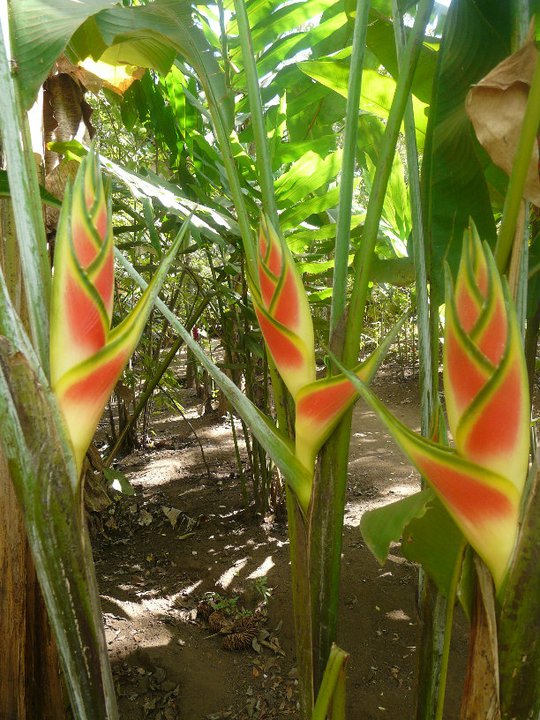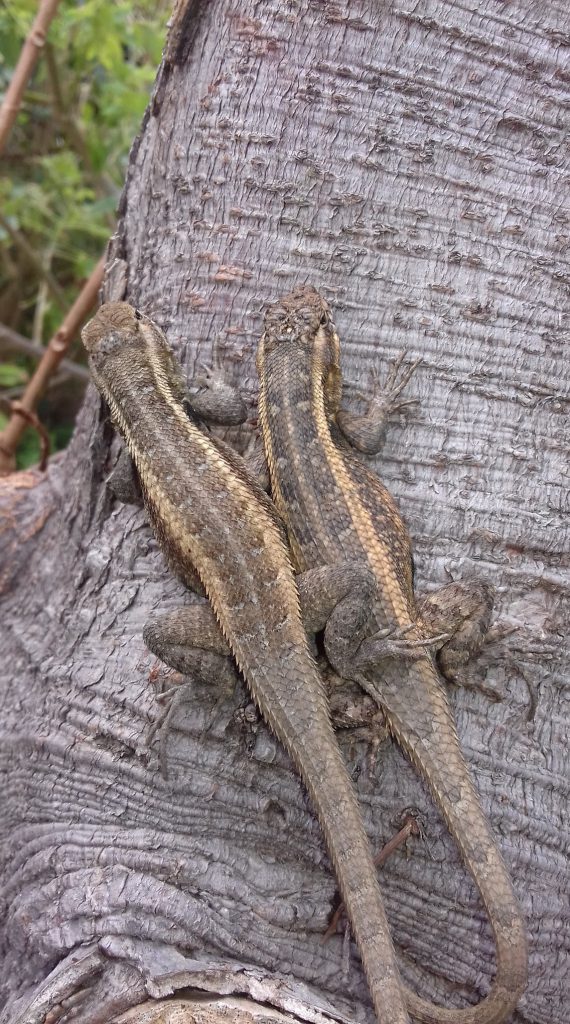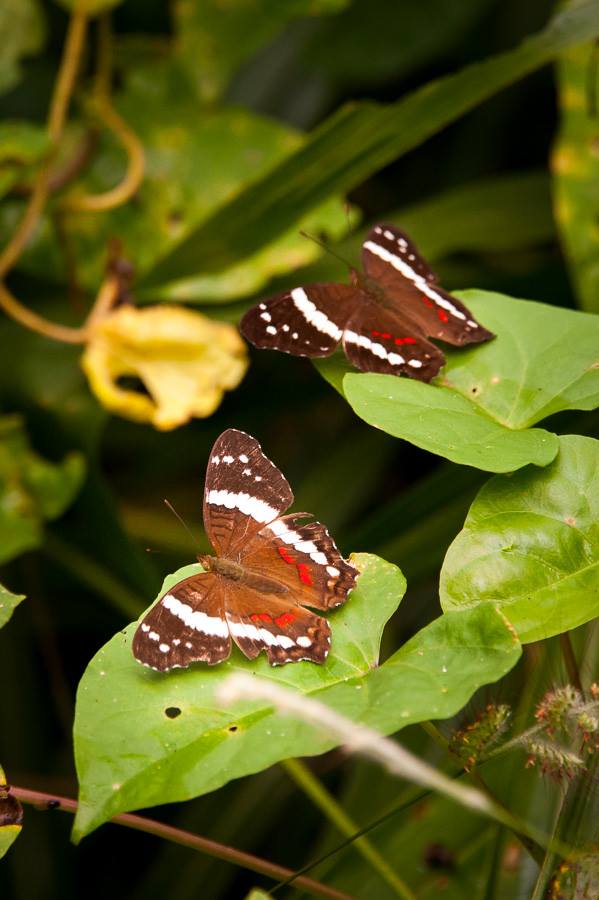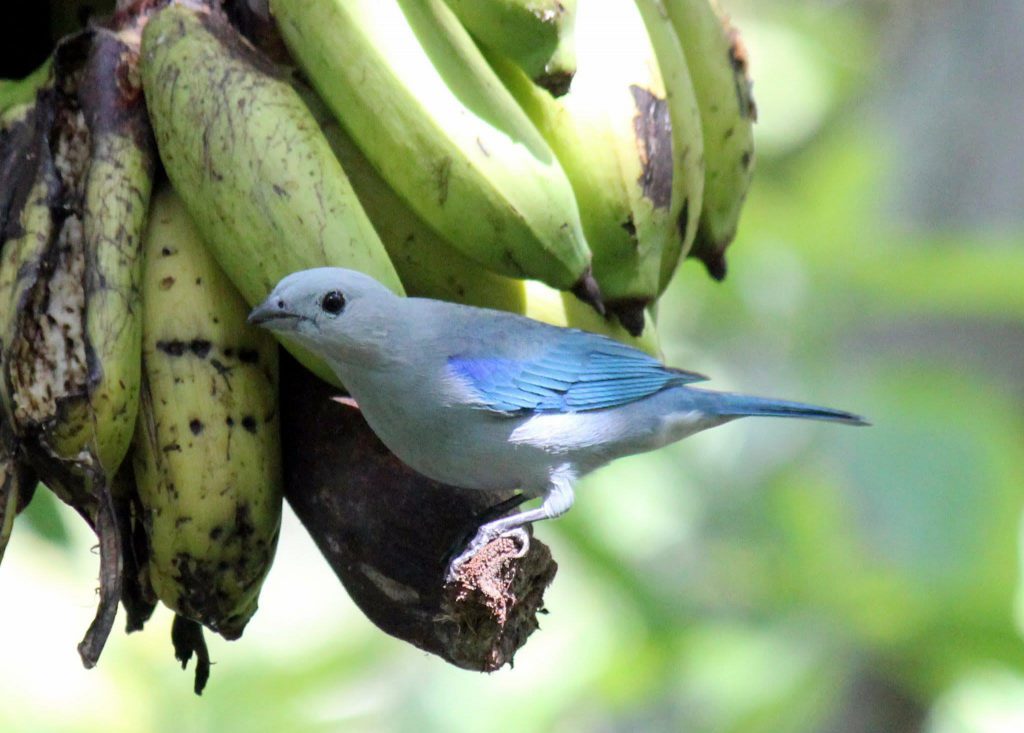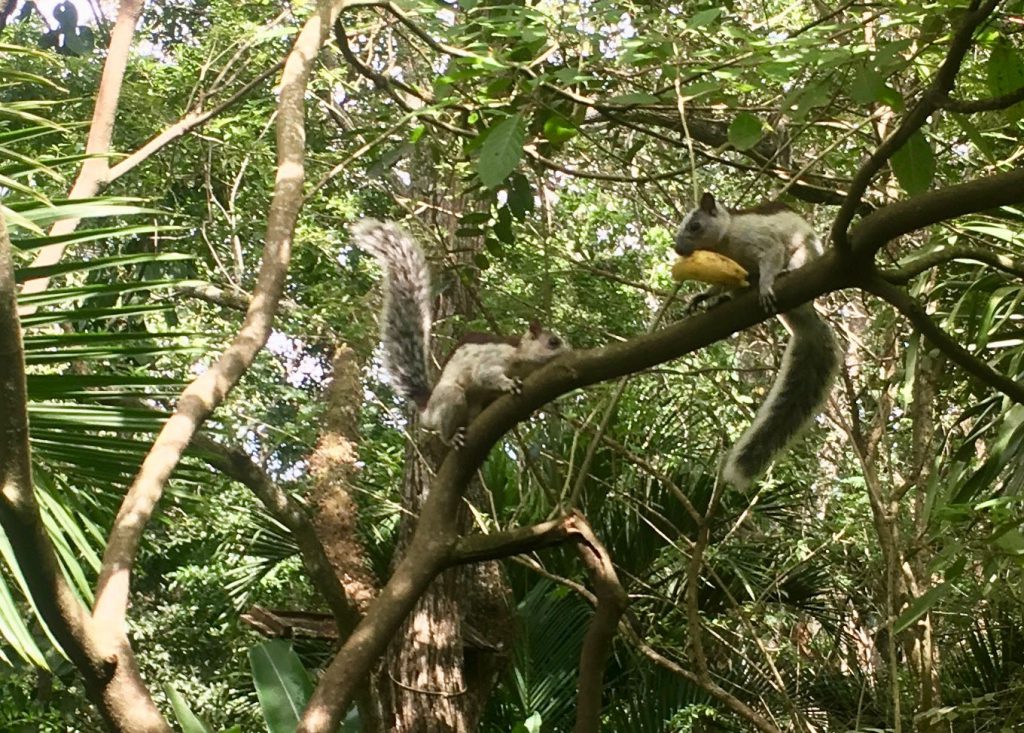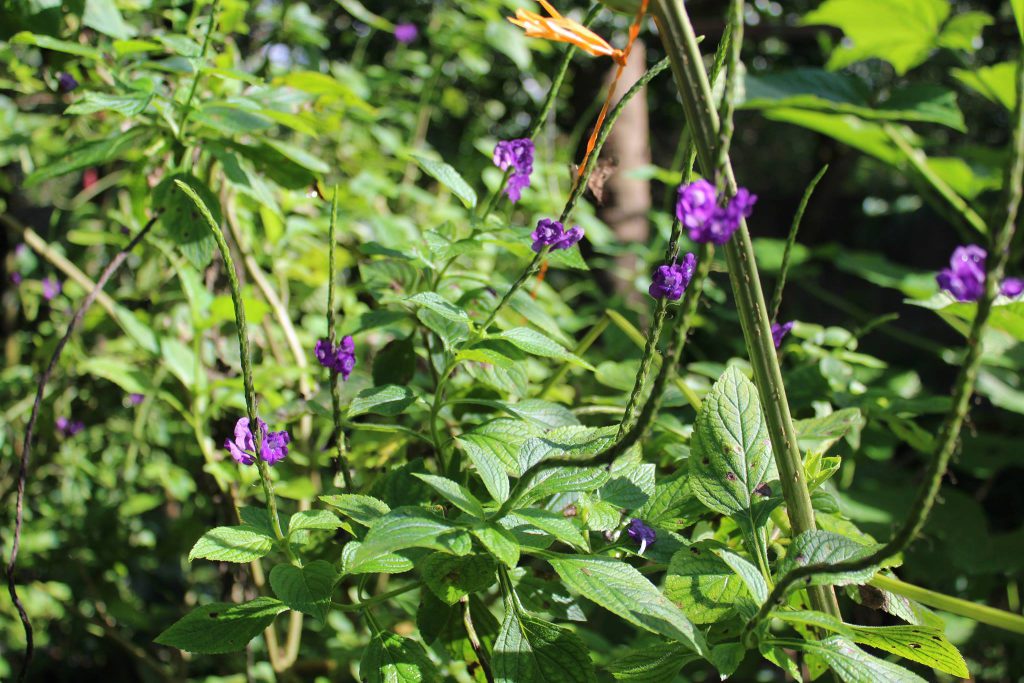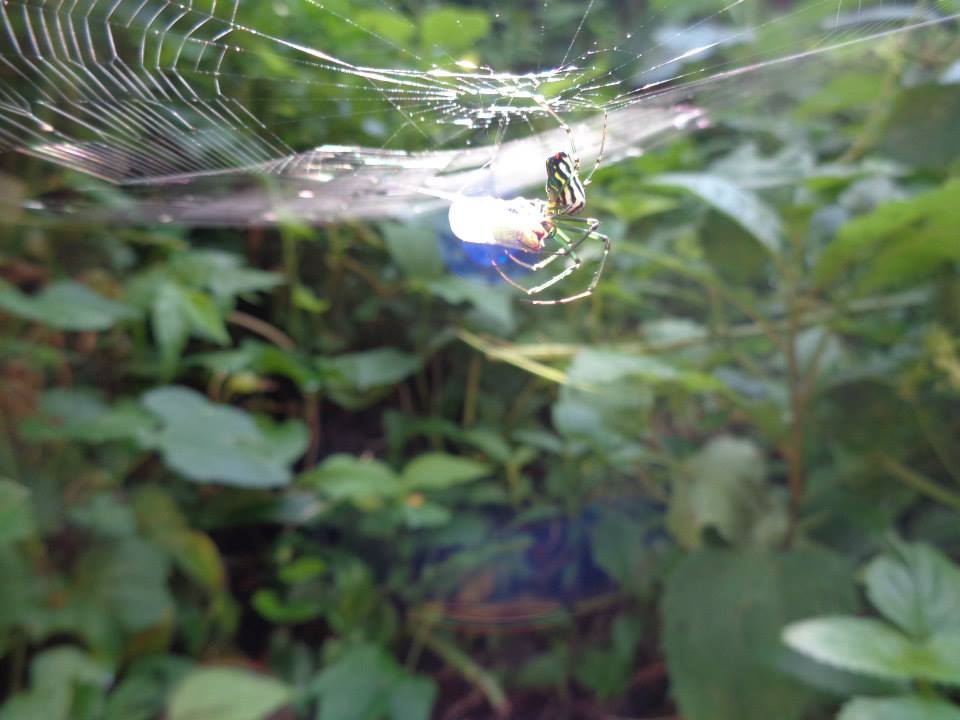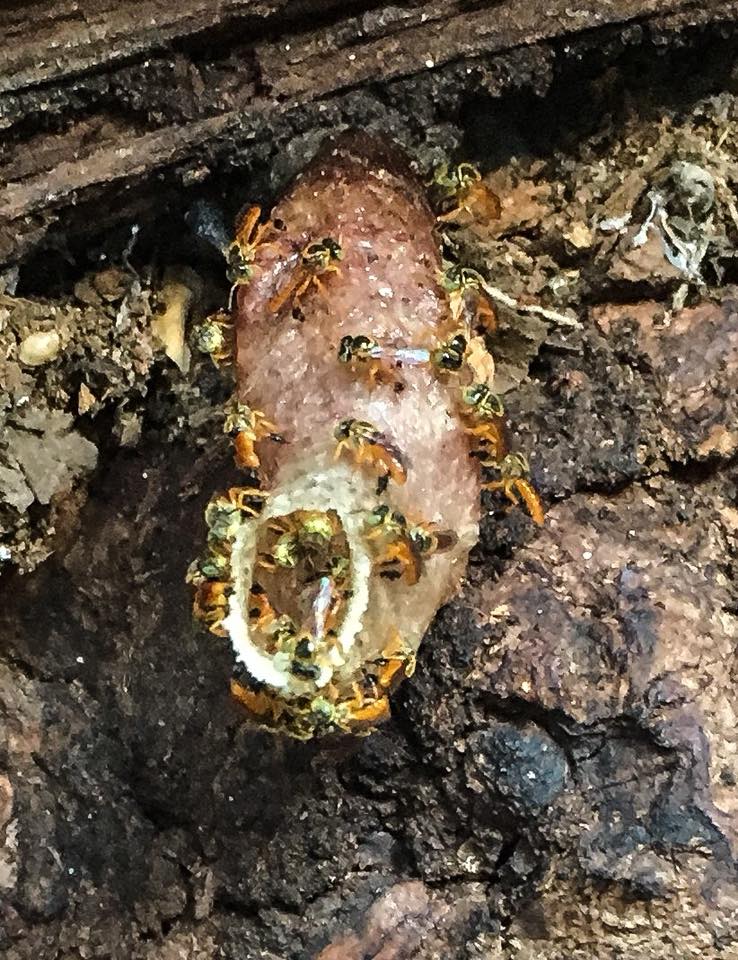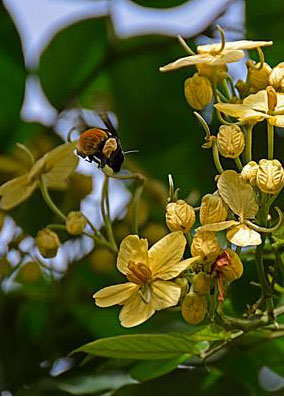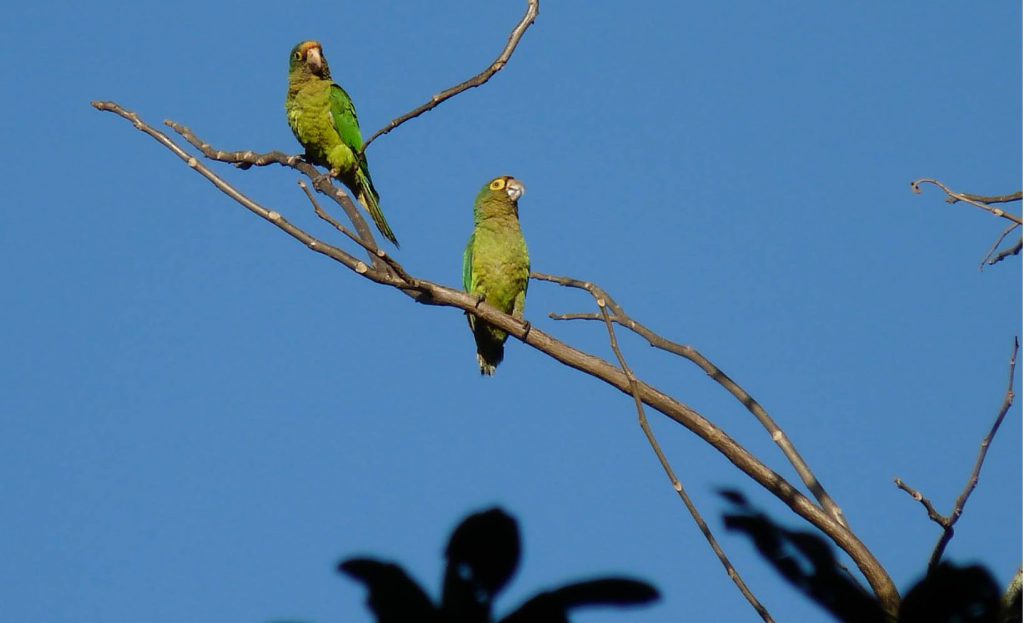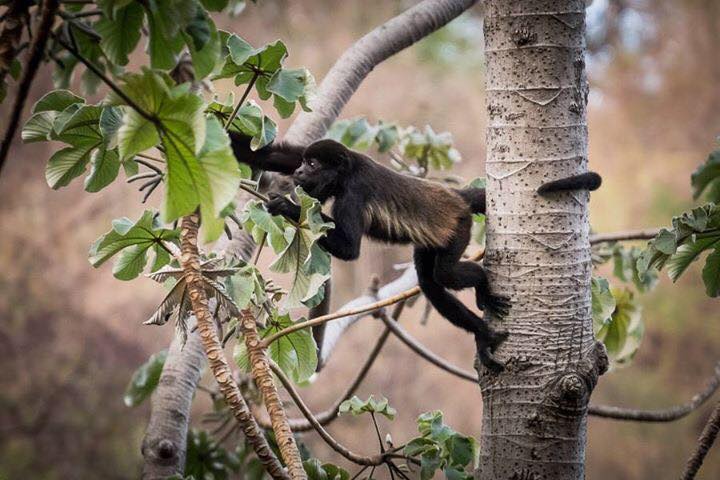Over the years that we have been open, La Mariposa has made strenuous efforts to conserve, protect and increase the bird and general wildlife on all of our land.
The challenges are enormous. Firstly, this is a heavily populated area, though it does not look like it as it is so green and beautiful with trees everywhere. Closer inspection however reveals that the majority of the trees are fruit trees – not a bad thing (especially for accessing delicious fruit easily!) but not always compatible with wildlife. Secondly, there are kids who hunt – both at night with dogs, usually after armadillo, iguana or the guatusa (the long legged guinea pig) – all of which are eaten though less and less frequently. And sometimes during the day younger kids are out and about with their catapults shooting at anything that moves. Many small insects, rodents and reptiles are also killed by the fumigations carried out by the local health authority in an attempt to prevent the spread of dengue fever which is actually on the rise due to the rise in temperatures associated with climate change. Ironically the natural predators of the dengue carrying mosquito are also killed in the process!
However, by far and away the biggest threat to wildlife here is loss of habitat. Trees are cut either to provide precious wood (especially for the furniture making industry) or to plant crops of corn or beans. Pineapples are particularly strong sun lovers and so every tree in the field is cut where they are grown. A recent development has been clear cutting to plant dragon fruit – another sun loving crop – much of which is now exported to the USA. Land is also cleared wholesale to make room for new, Western style developments. It is very sad to see roadside hedges, once full of wildflowers and butterflies, simply uprooted to widen an already perfectly serviceable road.
So what have we done at the Mariposa?
- Planting trees is obviously crucial. In fact we have planted so many on the land at the original Mariposa that we now have so much shade it is hard for flowers to grow successfully. Our butterfly project has therefore been less successful so we are keeping some land at the finca and at the study centre relatively tree free and sunny. Varieties of trees have included chilomate, capulin (both excellent seed producers and therefore great food suppliers for birds, squirrels, bats), guanacaste, roble, coppel, aceituna and many others. A particular delight is the marango tree which is also known as the miracle tree because people can eat the leaves and obtain the daily requirement of protein. This tree grows from just cutting off a branch and sticking it in the soil (we are lucky to have super fertile volcanic soil here) – within 3 months it will have leaves and little white flowers. These flowers are loved by many insects, including bees, hummingbirds and other birds such as the tanagers. Having noticed this (right outside my bedroom window) we have now planted loads of them!!! Last year we planted around 2000 more trees on the study centre land and already there are more birds and iguana to be seen.
- We also plant fruit trees – citrics, bananas, guava, almond and leave the harvest for our wildlife. We also hang bunches of bananas especially in the dry season when the food supply is at its lowest. This also has the advantage of bringing birds in close! And provide water for drinking and bathing.
- Our woodland garden is well under way. The Mariposa is part of an old coffee plantation so, whilst not destroying the coffee bushes, we are gradually working our way through the woods planting a much more varied undergrowth. We use a mulch of leaves and some food waste to provide organic fertilizer as well as holding water.
- We use whatever works to create more habitats and care for existing ones. Around the Mariposa land, there was already a traditional fence of a large cactus type plant, called pinuela, which not only looks terrific and provides excellent homes for spiders, lizards and hibernating places for frogs in the dry season….but is also very effective at keeping unwanted guests out! Sadly many Nicaraguans, having been told for 500 years that traditional ways of doing things are backward, are tearing them out and replacing them with barbed wire (horrible for wildlife and actually super easy even for an unfit 60 something year old to climb across). But we look after ours and have planted much more in the study centre and around the farm.
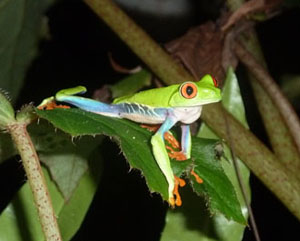
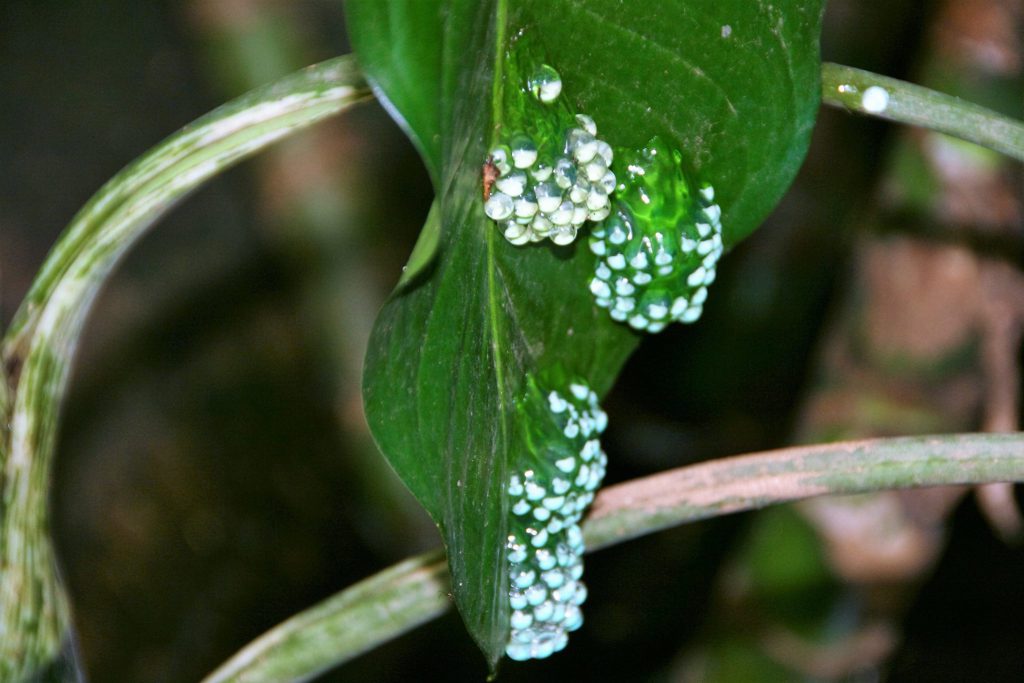
frog eggs 
- Our small frog pond has also been remarkably successful. Really nothing more than a hole in the ground lined with concrete it has attracted at least 3 species of frogs including the orange footed, red eyed tree frog. The frog and tadpoles are of course also a very good way of naturally controlling unwanted pests such as mosquitoes.
- We have a small bee project – the photo above left is of the native Nicaraguan bee which is tiny an does not sting. We have created homes for them and, even though it is delicious, we do not harvest their honey. We leave it to help them reproduce more. The nature reserve has more nests in hollow trees in the woods.
- Whilst continuing to take care of those birds and animals which cannot be released (the monkeys for example are just too tame, they would not survive without stealing someone’s bananas!) we take care of any wild animals brought to us and then return them to the wild as soon as possible.

